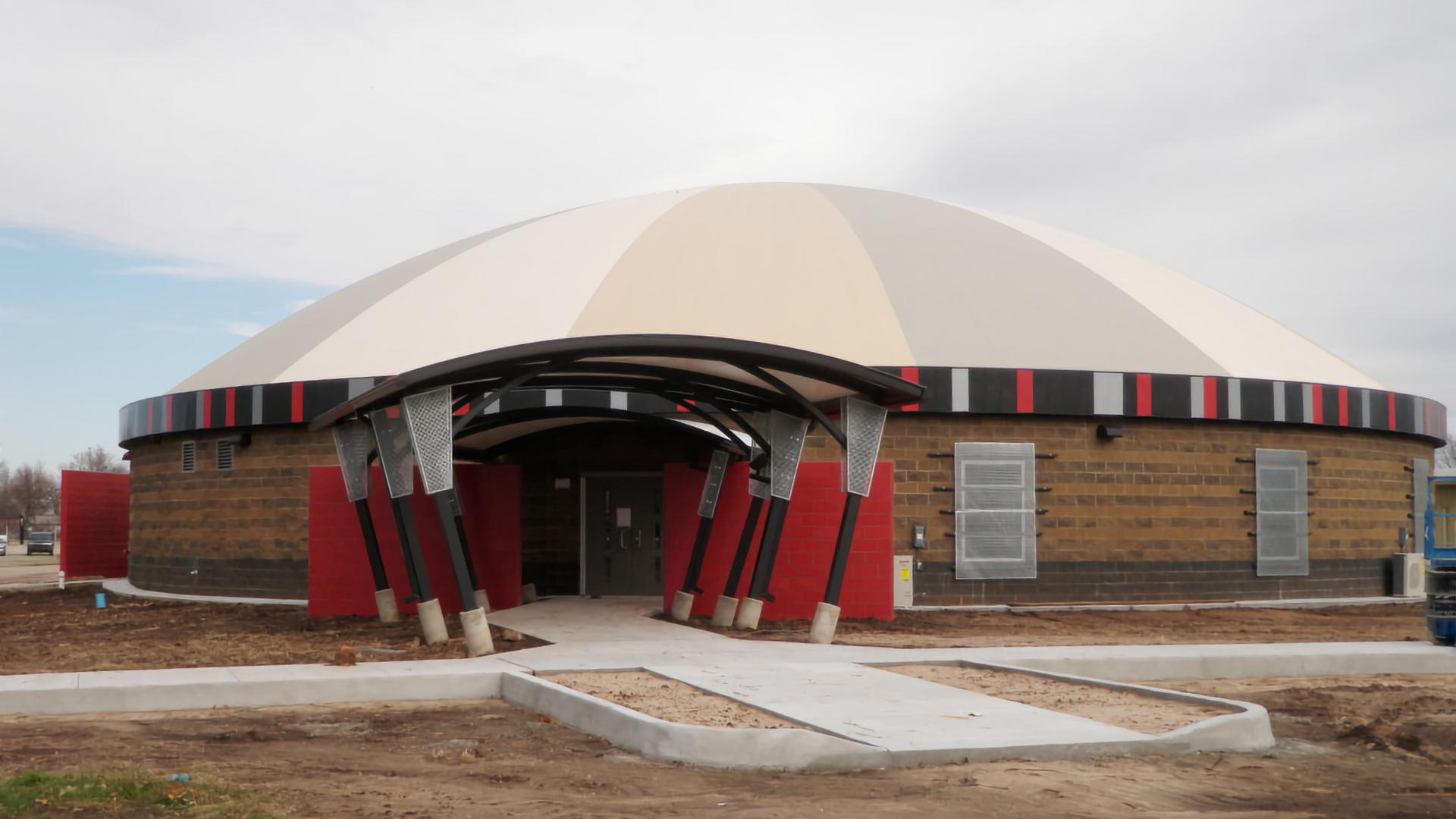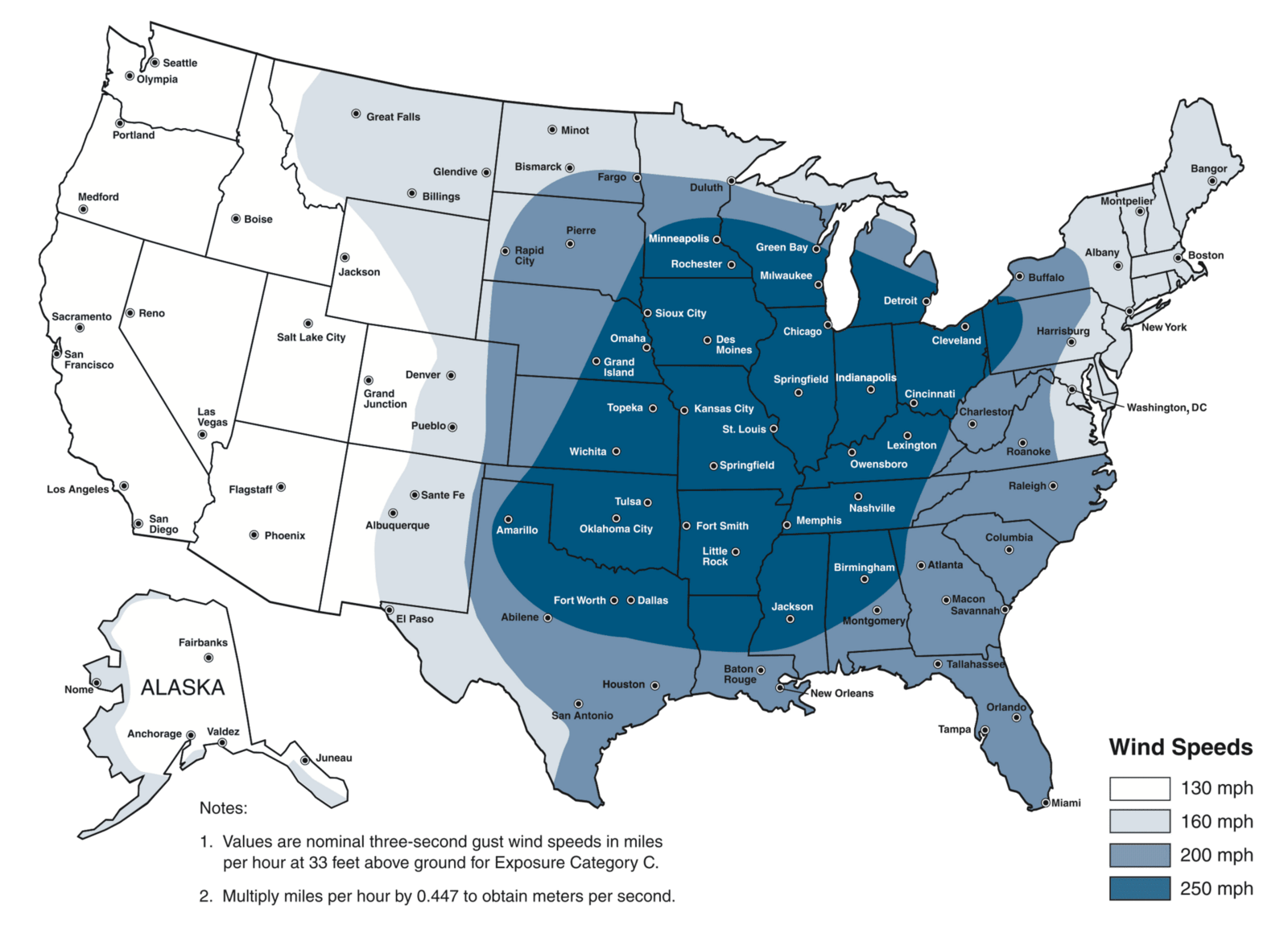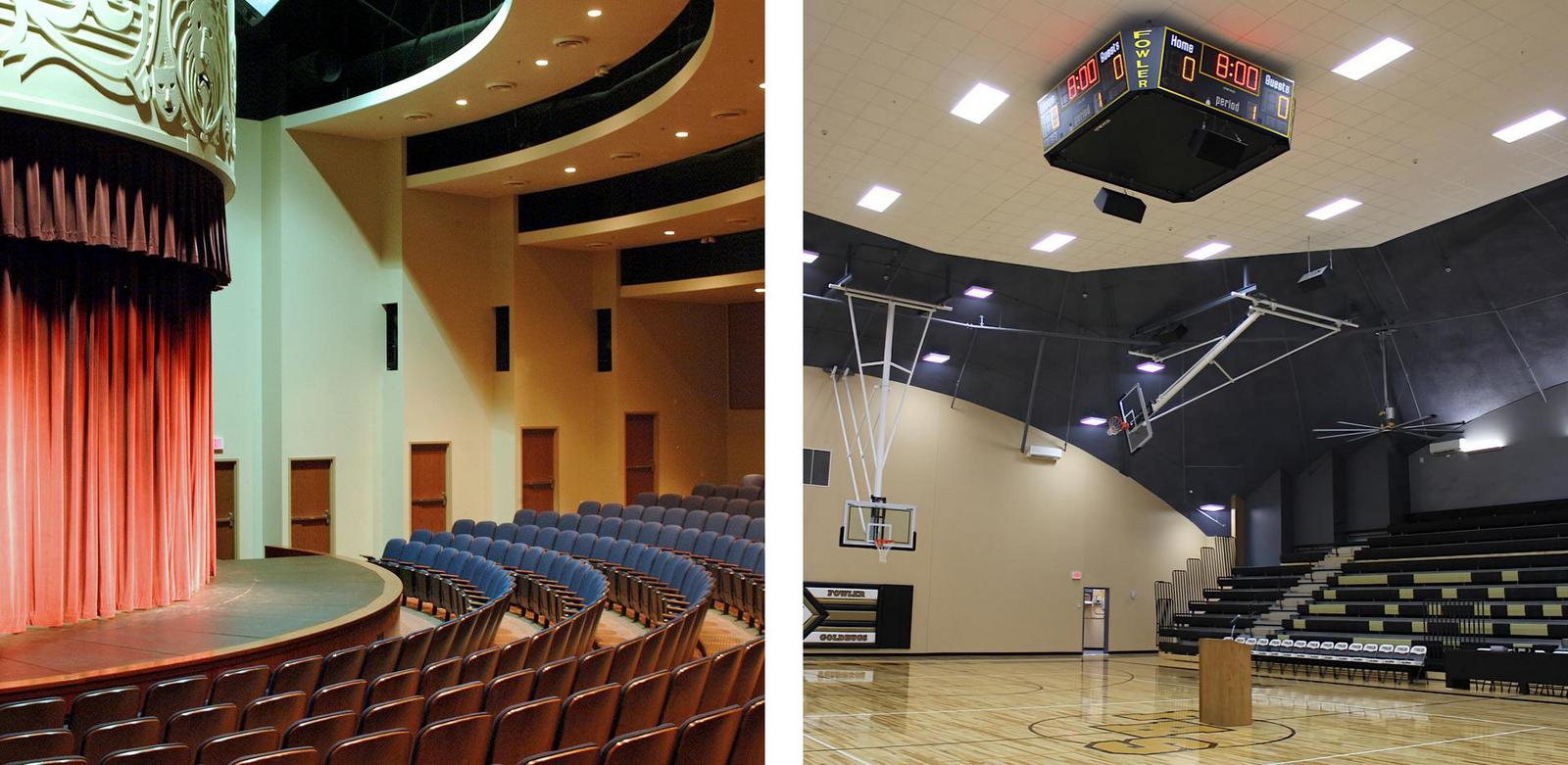Concrete Dome Structures and Extreme Wind Loads: The Design of Community Shelters
Chris ZWEIFEL, P.E., S.E.—ZZ Consulting in Shelley, Idaho
Andrew SOUTH—Department of Civil Engineering, Stanford University
Abstract
Public agencies are investing in the development of community shelters as resilient structures to provide a place of refuge for citizens during extreme wind events. An analysis of code-based design parameters for traditional assembly type dome structures is contrasted with an analysis of design parameters required by the United States Federal Emergency Management Agency (FEMA) document 361—“Design and Construction Guidance for Community Safe Rooms.” It demonstrates that the factors governing the code-based design of thin-shell domes are such that an extension of FEMA 361 compliance requires a marginal increase compared to alternate building types.
Keywords: concrete dome, community shelter, FEMA, hurricane, tornado, wind design, windborne debris.
Table of Contents
- Introduction
- Storm Shelters
- Building Type Comparison
- Dome Design Comparison
- Windborne Debris
- Versatility
- Conclusion
- References
- Copyright
1. Introduction
As the population of the United States continues to rise, more people and more structures are at risk during extreme wind events. Robust structures are required to protect lives during tornados and hurricanes. By comparing the loads applied to storm shelters and assembly structures, the heightened design differences are demonstrated. A cost comparison of a conventional building and a concrete dome contrasts the economic differences between these building types, while a side-by-side comparison of dome design forces illustrates the relatively minor changes in the dome between a storm shelter and an assembly structure and the durability and versatility of dome structures.
2. Storm Shelters
According to the National Oceanic and Atmospheric Association (NOAA), the documented frequency and intensity of tornadoes and hurricanes has not significantly risen over the past number of years, however, the number of people and structures in the path of these destructive wind events constantly increases. Costs of damages are also on the rise. The Federal Emergency Management Agency (FEMA) has published storm shelter design and construction guidance criteria since 1976, with the first edition of FEMA document 361—“Design and Construction of Community Safe Rooms” published in 2000. Since that time, thousands of safe rooms have been built using FEMA 361 criteria. A growing number of these safe rooms have already saved lives in actual events. A consensus standard was written by the International Code Council (ICC) and the National Storm Shelter Association (NSSA), ICC 500-2008 “Standard for the Design and Construction of Storm Shelters” has been adopted by reference in the International Building Code (IBC) which is the most widely used building code in the United States.
With this increased risk due to windstorm activity and especially after damaging events like the tornado in Moore, Oklahoma in 2013 that killed 24 people including 7 school children, there has been a public outcry to provide safe shelters for the community, especially at schools. As the construction expenditure of such a large number of structures is considerable, communities can apply to FEMA for a possible grant to offset some of the cost, if the shelter is designed and constructed to FEMA 361 standards. However, grant funds from agencies such as FEMA are limited in comparison to the numbers of construction projects occurring in “at-risk” areas. To capitalize on existing resources, building owners/sponsors and design professionals should be selecting structure types that require minimal increases in cost to provide protection for life and property.
3. Building Type Comparison
The effect of storm shelter design on different building types is illustrated here with a conventional square building and a dome building. The square building is 37.8 m × 37.8 m with 9 m tall walls. The building has masonry walls and steel joists with steel decking on the roof. The dome has a diameter of 42.6 m and a height of 8 m with 5 m tall vertical masonry walls. The dome is reinforced concrete. Both buildings have roughly the same floor area and interior volume. They are the size of buildings that might be found at a school or community for use as a gymnasium with a basketball court.
3.1 Building Design Criteria
3.1.1 Assembly Building
- Roof live load – 1.0 kPa
- Wind load 54 m/s
- Exposure C
- Internal pressure coefficient ±0.18 – enclosed building
3.1.2 Storm Shelter Building
- Roof live load – 4.8 kPa *
- Wind load 110 m/s
- Exposure C
- Internal pressure coefficient ±0.55 – partially enclosed building**
* The high roof live load is used by the code to account for rubble loading, which is common when the shelter is located within an existing building that could collapse. There are currently no separate criteria for independent structures, so the same roof live load is used for free-standing shelters.
** The interior pressure coefficient is used by the code to model atmospheric effects when pressure differential openings are not included. The required opening size to eliminate the pressure differential is 0.3283 m² for every 100 m³ of interior volume. The buildings in this example have an interior volume of approximately 12,900 m³ and would require 42.4 m² of openings. Using the higher internal pressure has a smaller economic impact on the dome than adding the required area of openings with rated storm louvers. The same might not be true of the conventional building and would need to be investigated on a case-by-case basis.
| Anticipated Building Cost*** | |
|---|---|
| Conventional square building—assembly design | $0.74M USD–$0.83M USD |
| Conventional square building—storm shelter design | $2.44M USD–$2.69M USD |
| Concrete dome—assembly design | $0.92M USD–$1.02M USD |
| Concrete dome—storm shelter design | $1.02M USD–$1.12M USD |
Table 1: Cost Comparison between building types (2014 prices)
*** The building cost comparison is for the building shell only and does not include any interior finishes, mechanical systems, or doors and windows which would be the same for both building types.
Comparing these buildings with the different design criteria, the conventional square building increased in cost by about 227 percent. The dome building showed a cost increase of about 10 percent. The tall, long clear-span storm shelter example shown here has a much greater effect on the cost of the conventional building than it does for the dome. For a smaller building with shorter spans, FEMA suggests that the cost increase from a conventional design to a storm shelter might only be 30 percent. This efficiency is noted by the Texas Division of Emergency Management. They recently published some planning factors for FEMA grant applications. In this document, they recommend a “safe room planning (budget) factor” of $1290/m² for dome construction, $2150/m² for concrete tilt-up construction, and $2850/m² for cast-in-place concrete/brick. (2014 prices)
4. Dome Design Comparison
The inherent strength of the concrete dome is such that very little modification is required to meet the storm shelter criteria. This is highlighted by a side-by-side comparison between a storm shelter dome and an assembly building dome. The two load cases to be compared are representative of the worst load combinations for a typical storm shelter design. Both the dome size and the design criteria are the same as in the previous example. The forces for the load cases shown are non-factored loads.
The following diagrams visually demonstrate that design forces generally only vary about 50 percent even though the externally applied loads, roof live load, and wind load, are approximately 4-5 times larger for storm shelter domes than typical assembly type dome buildings.
4.1 Dead Load + Live Load
4.1.1 Bending Forces:
4.1.2 Hoop (horizontal) Forces:
4.1.3 Radial (vertical) Forces:
4.2 Dead Load + Wind Load
4.2.1 Bending Forces:
4.2.2 Hoop Forces:
4.2.3 Radial Forces:
5. Windborne Debris
Windborne debris, or missiles as they are commonly termed, cause many injuries and much of the damage from windstorms. While the size and speed of airborne missiles can be different for each occurrence, the standard for design impact criteria for a storm shelter is a 6.8 kg piece of sawn lumber that is 38 mm × 89 mm in cross-section. This represents debris likely to be generated by extreme wind events.
| DESIGN WIND SPEED | MISSILE SPEED AND SHELTER IMPACT SURFACE |
|---|---|
| 58 m/s | 36 m/s Vertical Surfaces 24 m/s Horizontal Surfaces |
| 72 m/s | 38 m/s Vertical Surfaces 25 m/s Horizontal Surfaces |
| 90 m/s | 40 m/s Vertical Surfaces 27 m/s Horizontal Surfaces |
| 112 m/s | 45 m/s Vertical Surfaces 30 m/s Horizontal Surfaces |
Table 2: Design Impact criteria for storm shelters
The design impact criteria are most likely to drive the design of the envelope or cladding of a storm shelter. This is especially true for openings. Doors and windows that meet the missile criteria can be 8-10 times more expensive than the same doors and windows for a conventional building design. A large number of openings can add significant costs to storm shelters.
6. Versatility
Concrete domes have an advantage over many other types of storm shelters since they don’t require any interior bearing walls. This leaves an open space that can be configured to best suit the requirements of the occupancy. If the storm shelter occupancy changes, the entire interior can be reconfigured without affecting the storm shelter rating. The storm shelter can also be a church, theater, gymnasium, school, or community center.
7. Conclusion
As more people are exposed to the dangers of hurricanes, tornados, and other extreme high-wind events, the need for structures that resist not only wind forces but also windborne debris continues to rise. Architects, engineers, and builders are looking for economical solutions to safeguard lives and property. Concrete domes are one building type that satisfies these requirements. Not only are concrete domes extremely durable, but they also provide a cost-effective and versatile solution that can be configured for any required occupancy.
References
- FEMA 361, Second Edition/August 2008 Design and Construction Guidance for Community Safe Rooms
- Texas Community Safe Room Handbook, March 2008, Texas Division of Emergency Management
- ICC 500-2008, June 27, 2008, ICC/NSSA Standard for the Design and Construction of Storm Shelters
- MEANS Construction pricing comparison.
- RISA 3D Version 11, RISA Technologies, Foothill Ranch, California
- Texas Community Safe Room Handbook, December 12, 2013, Texas Division of Emergency Management
Copyright
Copyright © 2014 by the authors. Published with permission. Originally published by the International Association for Shell and Spatial Structures; Proceedings of the IASS-SLTE 2014 Symposium; “Shells, Membranes and Spatial Structures: Footprints”; 15 to 19 September 2014, Brasilia, Brazil; Reyolando M.L.R.F. BRASIL and Ruy M.O. PAULETTI (eds.)








